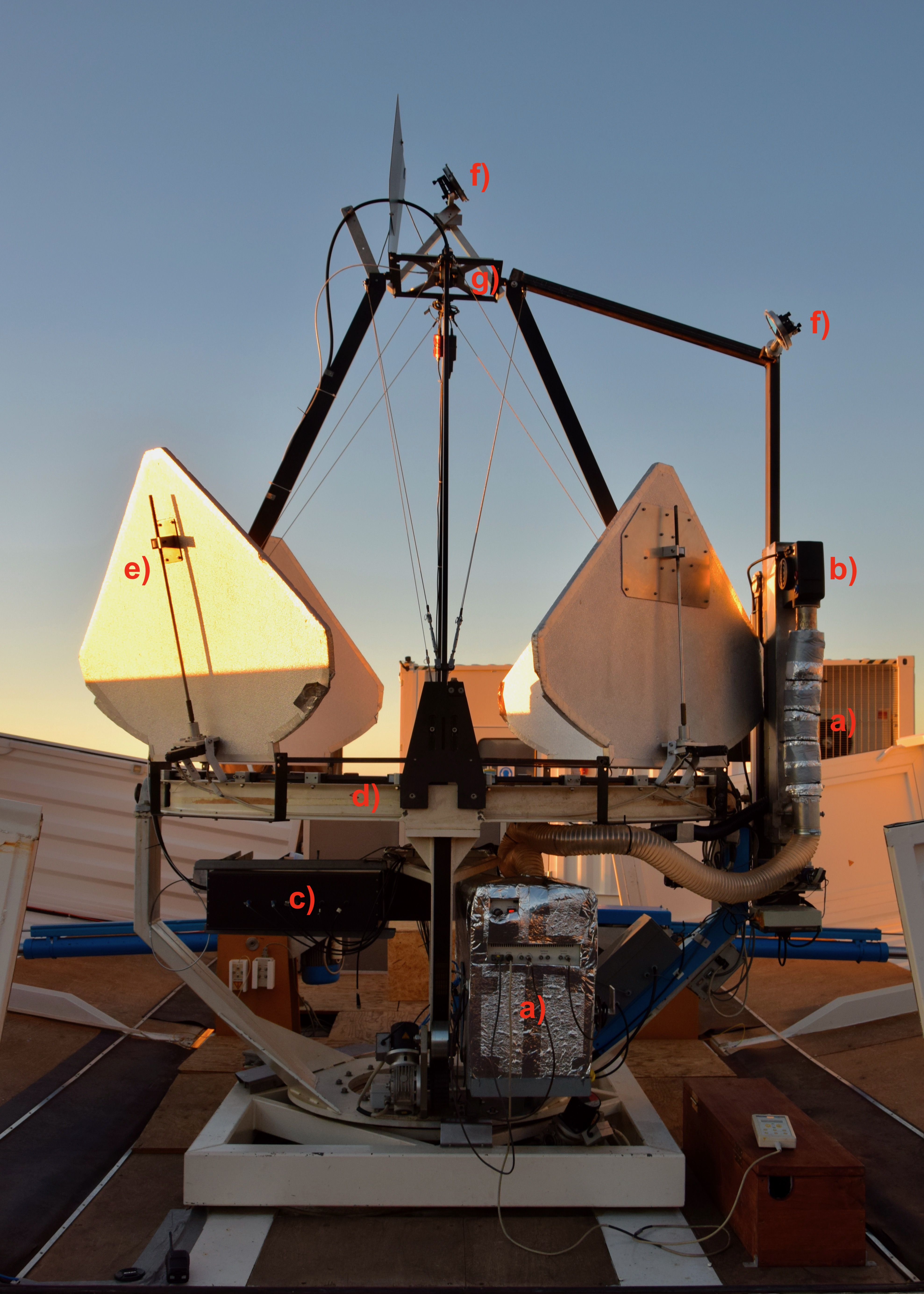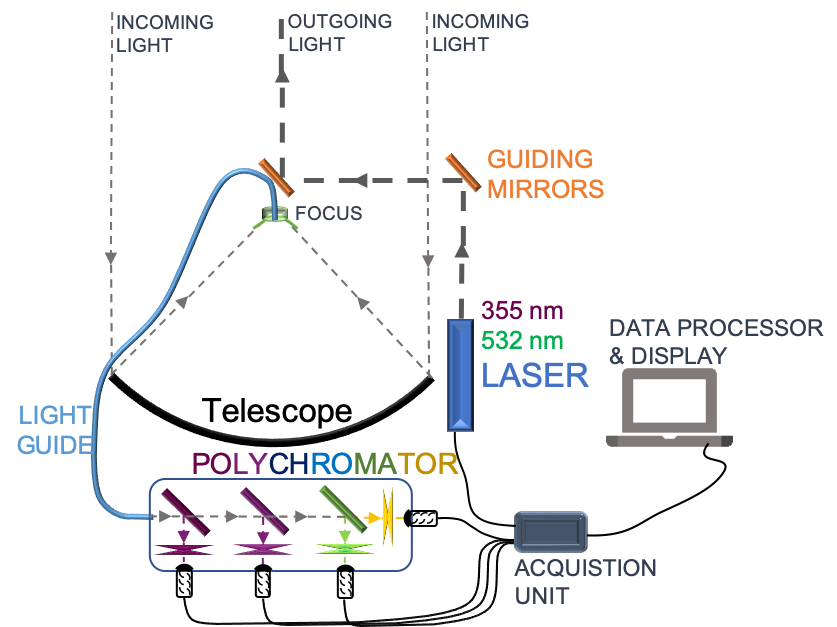Barcelona Raman Lidar
Ground-based gamma-ray astronomy made a considerable progress with the adoption of Imaging Atmospheric Cherenkov Telescopes (IACTs). A IACT is sensitive to Cherenkov light created by particles in gamma-ray induced air showers. Compared to other high energy detectors, the experiments that relay on air-shower measurements use atmosphere as a calorimeter. Even though IACTs are usually located at sites, where atmospheric conditions are very stable, local atmosphere should be continuously monitored, in terms of molecular density profiles, aerosol extinction profiles, and clouds. A next generation instrument, which will increase sensitivity of gamma-ray detection in 100 GeV to 10 TeV range for a factor of 5-10 is the Cherenkov Telescope Array Observatory (CTAO).
For measurements of atmospheric properties above the CTAO a LIDAR (LIght Detection And Ranging, a remote sensing device that measures backscattering of emitted laser pulses on aerosols and molecules along its field of view) system will be used. Operating at 355 nm, where the maximum efficiency of CTAO is reached, it will be able to detect fine structures in the lowest part of the atmosphere and provide input data for CTAO telescope calibration. Our LIDAR device has to meet the requirements imposed by the observatory. To calibrate CTAO for any atmospheric effects along its line of sight, the LIDAR must measure extinction profile up to the altitude of 15 km a.s.l. where extended air-showers are typically formed. Since the CTAO can operate down to the zenith angle of 60◦, this means LIDAR range must be at least 30 km. To cover the typical air-shower range of sever kilometers, the LIDAR range resolution must be at least or better than 300 m. The atmosphere must be characterized using at least two wavelengths present in the Cherenkov light spectrum, to be able to measure the transmittance with absolute accuracy of 0.03. Working at the CTAO maximum sensitivity, laser light from the LIDAR would blind the CTAO telescope, so the LIDAR data collection must be performed a few minutes before and after the CTAO observation period, and during Wobble position. To achieve this, LIDAR must perform full characterization of an extinction profile during a minute long time interval.
Barcelona Raman lidar design was awarded the status of a CTAO Pathfinder by the CTAO Council.

BRL was deployed for operation at the LST-1 site, Roque de los Muchachos Observatory, La Palma, from February 2021 to May 2022. Highlighted are the following lidar components: (a) laser power supply and laser head, (b) heater for laser operation under cold ambient temperature conditions, (c) polychromator, (d) main mirror, (e) petals, (f) guiding dichroic mirrors for the transmitter and (g) shutter for the optic fiber.

Schematic drawing of the BRL.